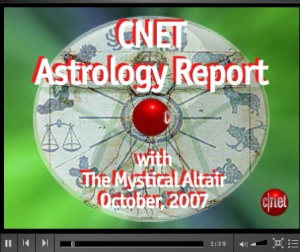 Andrew Zarian joins us and we’ll debate how good the possibility of HBO’s announced over the top Internet service might be.
Andrew Zarian joins us and we’ll debate how good the possibility of HBO’s announced over the top Internet service might be.
MP3
Multiple versions (ogg, video etc.) from Archive.org.
Please SUBSCRIBE HERE.
A special thanks to all our Patreon supporters–without you, none of this would be possible.
If you enjoy the show, please consider supporting the show here at the low, low cost of a nickel a day on Patreon. Thank you!
Big thanks to Dan Lueders for the headlines music and Martin Bell for the opening theme!
Big thanks to Mustafa A. from thepolarcat.com for the logo!
Thanks to our mods, Kylde, TomGehrke, sebgonz and scottierowland on the subreddit
Show Notes
Today’s guests: Andrew Zarian, founder of the GFQ Network
Headlines
CNET reports Google introduced three new Nexus devices today. The 8.9 inch Nexus 9 tablet by HTC, the Nexus 6 smartphone with a 5.93-inch display by Motorola and Asus’s Nexus Player, with Android TV. All run Lollipop, which is the new name for Android L. The Nexus 9 and Nexus Player start preorders October 17 – in stores November 3. Nexus 9 runs from $399 for 16GB up to $599 for 32GB with LTE The Nexus Player is $99 with an optional game controller for $40. You can preorder the Nexus 6 October 29 for sale in November. Sprint, US Cellular, AT&T and T-Mobile will have it in the US. Unlocked it runs $649 for 32GB and $699 for 64 GB.
So when will other phones are get Lollipop? Google says the Nexus 5 smartphone, Nexus 7 and Nexus 10 tablets and Google Play edition devices should get it in the coming weeks. Ars Technica reports HTC promised updates for some flagship phones within 90 days of Lolipop’s release. And Motorola says both the 2013 and 2014 Moto X, the 2013 and 2014 Moto G, the Moto E, and the Droid Ultra, Maxx, and Mini will all get it too though Motorola didn’t say when.
Usually I avoid Apple leaks especially the day before an announcement but this one has actual facts. Mark Gurman at 9to5 Mac discovered screenshots for the iOS 8.1 iPad user guide in iBooks included pictures of an iPad Air 2 and iPad mini 3. The screenshots indicated both new models had touch ID sensors and the iPad 2 has a new Burst mode for pictures. The designs pictured are nearly identical to current iPads.
ReCode reports HBO CEO Richard Plepler told investors at the Time Warner Inc. Investor meeting, “in 2015, we will launch a stand-alone, over-the-top, HBO service in the United States. We will work with our current partners. And, we will explore models with new partners.” Current partners are cablecos who also happen to be ISPs.
ReCode reports Netflix hit expectations for revenue in Q3 with $1.41 billion and 96 cents per share earnings. However they missed on subscriber expectations and the stock market is not happy. In a letter to investors, Reed Hastings wrote, “This quarter we over-forecasted membership growth.”
Ars Technica reports a new vulnerability in SSL version 3 called POODLE has been discovered that could be used to recover session cookies and impersonate users through a man in the middle attack. This is NOT OpenSSL so does not relate to Heartbeat. Modern browsers have switched to TLS not SSL v3 so most client-server interactions won’t be affected. HOWEVER, browsers have a nasty habit of falling back to SSLv3 when TLS fails or doesn’t exist, which mans attackers could use a link to trick a user into becoming vulnerable. What is to be done? Server operators should stop supporting SSLv3. GigaOm reports companies like Twitter, Cloudflare and others have done so. Users should turn off SSLv3 support in their browser. Go to zmap.io/sslv3/browsers.html for instructions. Mozilla and Google have announced they will remove support for SSLv3 from their client software. There is not a way to turn off SSLv3 in Safari or IE6. Hopefully Apple will fix Safari. IE6 on the other hand should be long dead anyway.
Venturebeat reports that Qualcomm will acquire CSR, maker of Bluetooth and GPS chips for $2.5 billion in cash. CSR is based in Cambridge, England; in addition to its chips, the company has branched out into cars, and the internet of things. CSR had previously turned down an acquisition offer from Microchip Technology, a maker of microcontrollers.
ZDNet’s Mary Jo Foley reports Microsoft and Docker have announced Docker container support will be included in the next release of Microsoft Windows’ Server, expected mid 2015. Docker container apps will run on Windows Server or Windows Server Next vm in Azure. Docker uses containers to enable apps to run across platforms, or have multiple apps run at once on one server, without needing a vm.
Ebay reported its 3rd quarter earnings, reported revenues of $4.4 billion, growing 12% from a year ago, and beating both Wall Street’s expectations and Ebay’s own estimates. PayPal is on track to process 1 billion mobile transactions in 2014, with mobile payments this quarter at $12 billion, up 72%.
News From You
ebridges13 submitted the Sploid post about the Aviation Week story on Lockheed Martin’s compact fusion reactor, which is safer and cleaner than nuclear fission. The CFR experiment T4 is about the size of a business jet engine. Up until now fusion reactors were massive in size and expense. Lockheed’s CFR uses plasma containment more efficiently such that for the same size it can generate 10 times more power than a typical fusion reactor. Before you get too excited Lockheed has yet to build a prototype and even then would be 5 years off from production.
MacBytes submitted The Verge Report writeup of the news that Facebook and Apple are offering a new employee benefit: both companies cover the costs of egg-freezing procedures up to $20,000 for individual employees. The procedure, known as oocyte cryopreservation, allows women to harvest healthy reproductive eggs during their most fertile years and freeze them for later. While the procedure is still relatively new, and doctors are still assessing its effectiveness it does indicate that Apple and Facebook are thinking about the needs of their current and possibly future female employees.
KAPT_Kipper submitted the VentureBeat article that Firefox 33 arrives today for Windows, Mac, Linux and Android. Among the new features is support for encoding and decoding OpenH264 sandboxed support through Cisco’s H.264 implementation. It works for WebRTC but not the video tag yet. There are also improvements to the search bar. The Android version has added a send to device option for video that works with Roku and Chromecast devices.
Discussion Links: HBO To Go?
http://recode.net/2014/10/15/hbo-says-its-going-to-start-selling-on-the-web-next-year/
http://www.theverge.com/2014/10/15/6982281/hbo-go-no-cable-streaming-netflix-worst-nightmare
http://www.timewarner.com/newsroom/press-releases/2014/10/15/hbo-chairman-and-ceo-richard-plepler-announces-hbo-to-offer-a
Pick of the Day: NoRoot Firewall via Loren Ahrens
I developed a problem with my android phone telling me, “Temporary server error, please try again later.” To isolate the app that is causing the problem I am using NoRoot Firewall. Every app that is calling home is easily identified. I’m surprised by a few and the will be uninstalling them now. Since it has been so easy and useful, I thought I’d share it.
Tomorrow’s guest: Andrea Smith, technology journalist




 Today’s Daily Tech News Show dives into TikTok’s potential shutdown, Google Workspace’s Gemini integration, and Softbank’s attempt to redefine search culture in Japan. Plus, insights into Nvidia’s Cosmos platform and more!
Today’s Daily Tech News Show dives into TikTok’s potential shutdown, Google Workspace’s Gemini integration, and Softbank’s attempt to redefine search culture in Japan. Plus, insights into Nvidia’s Cosmos platform and more! Apple delays the roll out of its Apple Intelligence until iOS 18.1 update in October. Plus Synology’s BeeStation hopes to streamline the data backup process for users who don’t want to be a part-time sysadmin. And Microsoft reveals more details about the CrowdStrike crash.
Apple delays the roll out of its Apple Intelligence until iOS 18.1 update in October. Plus Synology’s BeeStation hopes to streamline the data backup process for users who don’t want to be a part-time sysadmin. And Microsoft reveals more details about the CrowdStrike crash.